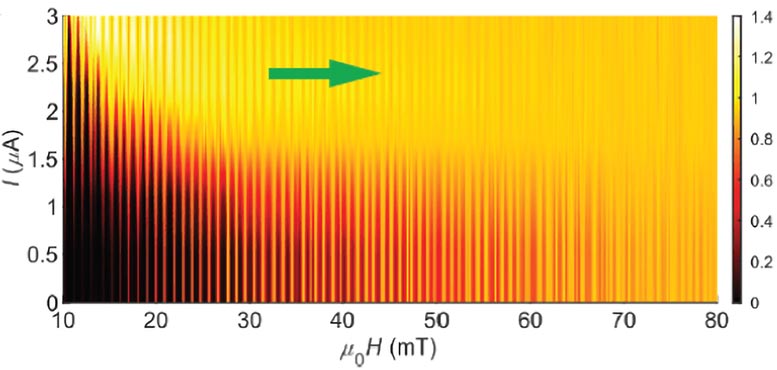

A new study highlights how a certain superconducting material demonstrates unique electron behavior at its edges, different from its interior. This could have major implications for developing efficient electrical systems and advancing quantum computing technologies.
Topological materials possess unusual properties due to their wavefunction—the physical law that guides electrons—being knotted or twisted. At the interface where topological material meets the surrounding space, the wavefunction must unwind. This sudden transition causes the electrons at the material’s edge to behave differently from those in the bulk. Such a discrepancy results in what scientists refer to as edge states.
If the topological material also exhibits superconductivity, both the bulk and the edge are superconducting, yet they exhibit distinct behaviors. This is a surprising scenario, akin to two touching pools of water that remain separate. This study reveals that the superconducting edge currents in the topological material molybdenum telluride (MoTe2) can withstand significant changes in the “glue” that maintains the pairing of superconducting electrons, a critical factor since electron pairing facilitates the free flow of electricity in a superconductor.
Unraveling Superconductivity in Topological Materials
Topological superconductors represent a potential new class of superconductors predicted by theory. If confirmed, they will enable the next generation of quantum technologies because they contain unique particles known as anyons. Unlike electrons, anyons remember their position. This allows them to be arranged to perform quantum computing operations in a way that protects against errors.
Topological superconductors also feature specialized currents known as “edge supercurrents” along their peripheries. These currents are instrumental for generating and manipulating anyons, paving the way for the development of quantum technologies and energy-efficient electronics.

Observing Edge Supercurrents in MoTe2
When MoTe2 becomes superconducting, the supercurrent (the maximum current that can be injected without destroying superconductivity) oscillates in a magnetic field. The edge supercurrent oscillates more rapidly than that in the bulk, showing up as a characteristic modulation of the bulk response. Superconducting currents are carried by paired electrons, and the glue that holds the pairs together can have widely different strengths and symmetries for different materials.
Enhancing Pair Potential with Niobium
To enhance the glue (pair potential) in MoTe2, scientists deposited niobium (Nb) on top of it, because Nb has a stronger pair potential. The Nb pair potential spills into MoTe2 and the electrons in the latter feel the stronger glue for a while. This leakage strengthens the supercurrent oscillations but also reveals incompatibility between the Nb and the MoTe2 pair potentials.
The two cannot seamlessly merge and the wavefunction guiding the edge electrons switches between the Nb and the MoTe2 pair potential, according to which potential prevails. The choice made by the edge electrons is reflected in the oscillations. These are noisy when the edge pair potential differs from that of bulk MoTe2, and almost noise free (as shown in the figure) when the two are the same.
This study not only confirms the existence of edge supercurrents but shows that they can be used to monitor the behavior of superconducting electrons in topological superconductors.
Reference: “Edge supercurrent reveals competition between condensates in a Weyl superconductor” by Stephan Kim, Shiming Lei, Leslie M. Schoop, R. J. Cava and N. P. Ong, 11 January 2024, Nature Physics.
DOI: 10.1038/s41567-023-02316-9
This research was funded by the Department of Energy Office of Science, Basic Energy Sciences program, the National Science Foundation, and the Gordon and Betty Moore Foundation’s Emergent Phenomena in Quantum Systems initiative.